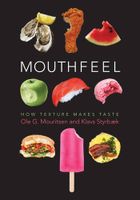Label
All
0
Clear all filters
🔥 Try our grilling cookbooks and save 25% on ckbk membership with code BBQ25 🔥
From Soft to Hard and Back Again
Appears in
By Ole Mouritsen and Klavs Styrbæk
Published 2017
Many foodstuffs are processed in such a way that their texture is changed quite dramatically—for example, when they are preserved, dried, or fermented. Sometimes, soft raw ingredients become firm, and in some cases, turn out so hard that they must be processed again to make them soft enough to be edible. All of this usually has an distinct effect on the nutritional value and taste of these raw ingredients.
In traditional Japanese cuisine, there are many examples of products made in this way, using ingredients harvested from the sea, especially fish and seaweeds. The two most fascinating examples are made from bonito, a fish related to mackerel and tuna, and from the popular macrokelp konbu. The former becomes hard as stone, whereas the latter ends up softer than a feather—they could justifiably be said to win the prize as the hardest and the softest foods in the world.
Part of
Advertisement
Advertisement
The licensor does not allow printing of this title


